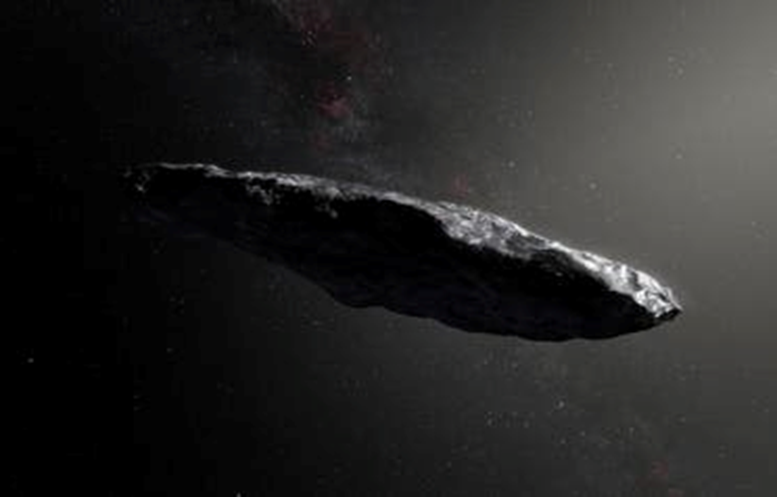Researchers provide a scientific explanation for the passage of a mysterious space object in our solar system

A recent study, the results of which were published yesterday, Wednesday, in the journal “Nature,” provided an explanation for the passage of a mysterious space object in our solar system in 2017, refuting what some have said in terms of attributing the strange visitor to aliens.
The meteor, which alarmed astrophysicists and was spotted by a telescope in Hawaii, was moving at such a high speed that it could only have come from another star system, in a first of its kind.
The discovery sparked unrest among astronomers, who have long been searching for comet-like objects entering our solar system from the vastness of space.
What did the space object look like?
"Oumuamua" - which means "scout" in the Hawaiian language - is not like the usual comets, as it did not have that distinctive envelope that usually consists of a huge halo of gas and dust when approaching the sun.

The space visitor, which was nearly 100 meters wide, was characterized by its brightness and the great change in brightness, which gives the impression that it is a metal body turning on itself.
But what was even more surprising is that after it orbited the sun, its movement accelerated and deviated from its path, driven by a mysterious force that expelled it from the solar system.
The distraught scientists found themselves over four months of incomplete and apparently conflicting data that they tried to analyze, leading to a whole series of theories.
And the “Agence France Presse” agency quoted Jennifer Bergner, an astrophysicist at the University of California, Berkeley, who participated in the study, that some of the hypotheses that were put forward in this matter “exceeded imagination.”

She explained that “Oumuamua”, whatever its origin, is a comet-like body rich in water. She added, “During its journey through interstellar space, this space object was exposed to cosmic rays that bombarded water with the release of hydrogen, which in turn became trapped in the core of this object.
As the space object approached the sun, the heat in turn released the trapped hydrogen, which acted as a "thrust" that sent the object on an unexpected path.
"Trapped hydrogen is simply the most general explanation," Daryl Seligman of Cornell University, who co-authored the study, said in a statement.
As for the astronomer at the European Space Agency, Marco Micheli, he believed that this work “undoubtedly provides the first explanation, simple and realistic, for the peculiarities of this body.”
extraterrestrial vehicle
But these conclusions were not supported by everyone, starting with Avi Loeb, former director of the astronomy department at Harvard University. He said the most reliable scenario is that Oumuamua was an extraterrestrial spacecraft.

And he defended this controversial hypothesis in 2021 in a book entitled “The First Sign of Intelligent Life Outside Planet Earth.”
In an interview with "Agence France Presse", the astrophysicist explained that saying that the comet has no tail "is like saying that the elephant is a zebra without stripes."
He recalled that the comet “TOI / Borisov”, the second visitor from outside the solar system that was observed in 2019, had what looked like long hairy lumps of dust.
Commenting on this, Jennifer Bergner said that if 'Oumuamua is tailless, it is likely because it is much smaller than all the comets observed so far.
While observations from the Vera-C. Rubin” in Chile, which will start in 2025, many new comets inside and outside the solar system, the astrochemist says that if smaller comets show signs of releasing trapped hydrogen, and they do not have a tail, like “Oumuamua”, that will confirm the theory.
Source: French - Agencies

